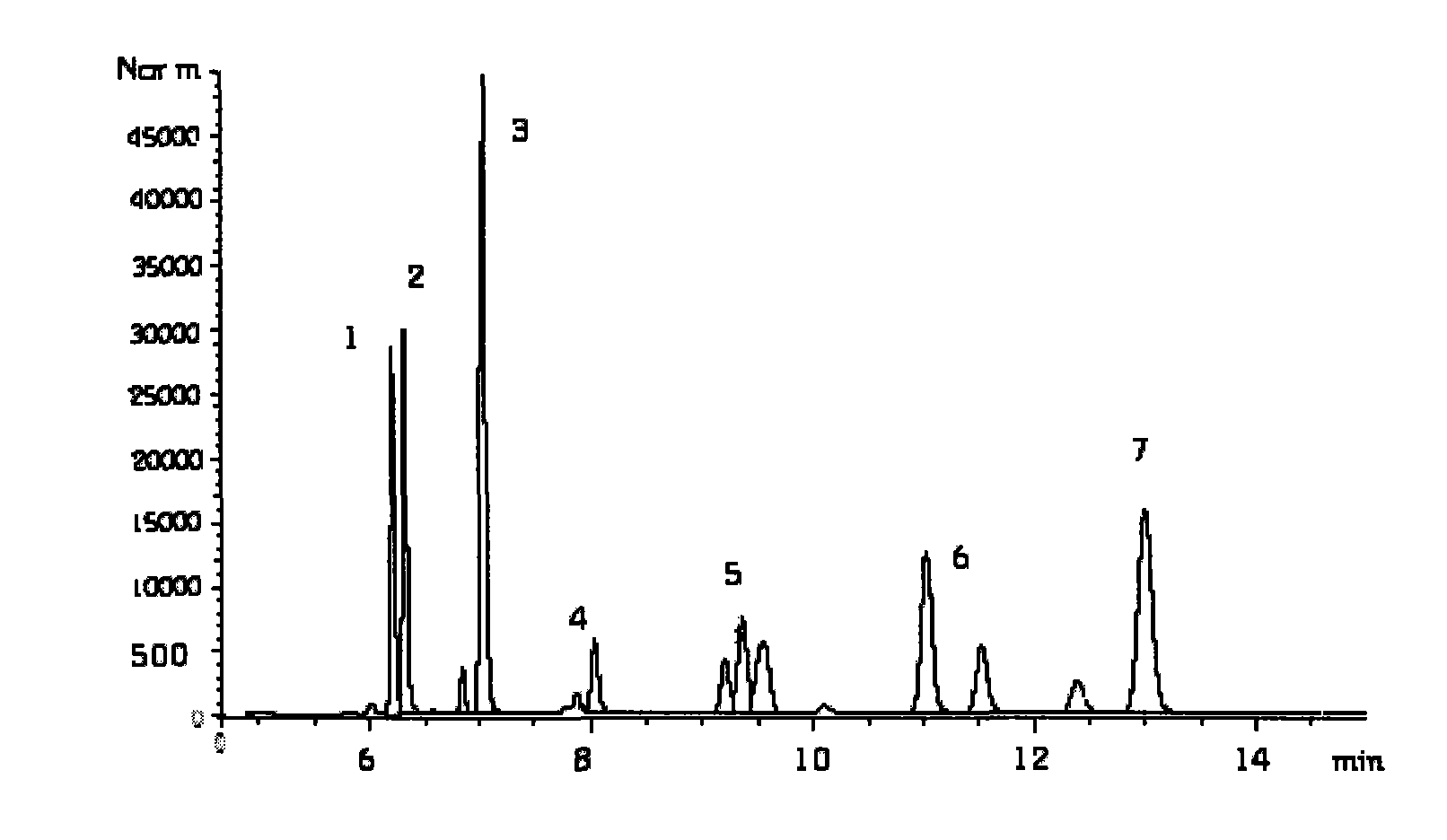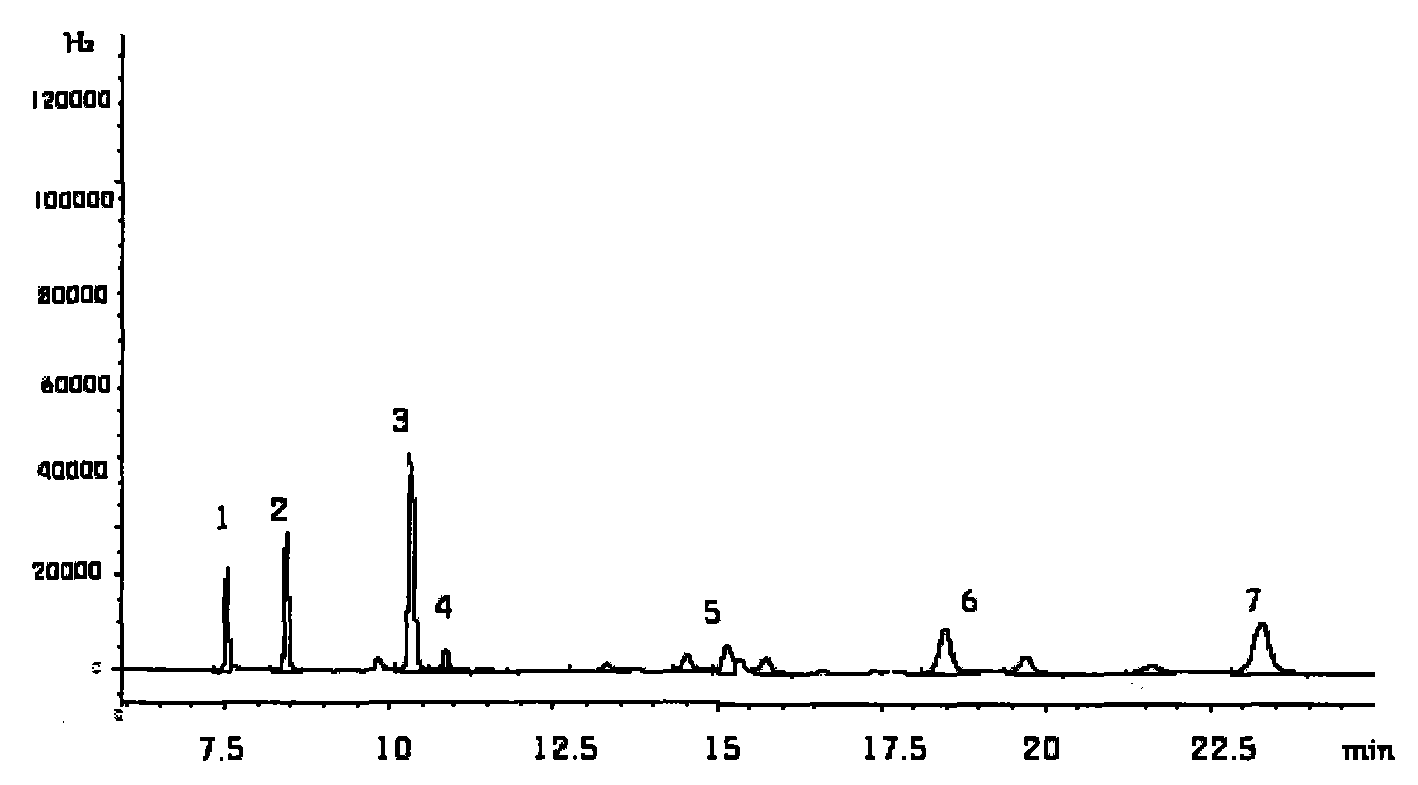Detection method of pyrethroid pesticide remained in rice
A technology for pyrethroids and pesticide residues is applied in the field of detection of pesticide residues in grains. less demanding effects
- Summary
- Abstract
- Description
- Claims
- Application Information
AI Technical Summary
Problems solved by technology
Method used
Image
Examples
Embodiment 1
[0017] A method for detecting pyrethroid pesticide residues in rice, taking 25 grams of crushed rice into a 125ml reagent bottle, adding permethrin, cypermethrin, bifenthrin, and cyhalothrin with a concentration of 1mg / kg The mixed standard solution prepared by pesticides such as fenvalerate, fenvalerate, deltamethrin and fenpropathrin, the addition level is 0.05mg·kg -1 For rice, the above-mentioned pesticide standard samples were all provided by the Environmental Protection Scientific Research and Monitoring Institute of the Ministry of Agriculture, with a concentration of 100mg / kg, prepared with chromatographically pure n-hexane and diluted to the required concentration. Then add 50 milliliters of acetonitrile, use a homogenizer to homogenize at high speed for 2 minutes, stand for extraction for 4 hours, add 15 milliliters of ultra-pure water to shake and let stand for 30 minutes, filter, and pour the filtrate into a centrifuge tube with 4 grams of sodium chloride In the me...
Embodiment 2
[0019]It is basically the same as in Example 1, except that the concentration of each pyrethroid pesticide is 0.1mg / kg, and the DB-1701 chromatographic column is replaced by an HP-5 chromatographic column, and the detection time can be shortened to 13min, obtaining the following: figure 2 The chromatogram of pyrethroid pesticide shown, can make the qualitative of pesticide according to the retention time after separation, from figure 2 It can be seen that the retention time of bifenthrin 1 is 6.209min, the retention time of fenpropathrin 2 is 6.322min, the retention time of cyhalothrin 3 is 7.041min, and the retention time of permethrin 4 is 8.039min min, the retention time of cypermethrin 5 is 9.197-9.548min, the retention time of fenvalerate 6 is 11.025-11.522min, and the retention time of deltamethrin 7 is 12.993min; repeat this embodiment three times, obtain according to the surface area The average quantitative recoveries are shown in Table 1.
Embodiment 3
[0021] It is basically the same as Example 2, except that the concentration of each pyrethroid pesticide is 0.5 mg / kg.
[0022] In the actual detection application, it is operated according to the method of the present invention, without adding the above-mentioned pesticide standard sample, and the specific detection method is the same as in Example 1 or Example 2, and the examples are no longer listed here.
PUM
 Login to View More
Login to View More Abstract
Description
Claims
Application Information
 Login to View More
Login to View More - Generate Ideas
- Intellectual Property
- Life Sciences
- Materials
- Tech Scout
- Unparalleled Data Quality
- Higher Quality Content
- 60% Fewer Hallucinations
Browse by: Latest US Patents, China's latest patents, Technical Efficacy Thesaurus, Application Domain, Technology Topic, Popular Technical Reports.
© 2025 PatSnap. All rights reserved.Legal|Privacy policy|Modern Slavery Act Transparency Statement|Sitemap|About US| Contact US: help@patsnap.com



